Table of Contents
Knee pain is a common reason for consultation in orthopedic offices, as it is an annoying symptom that can affect the quality of life when walking, running, or performing everyday movements. This discomfort can have a variety of causes, many of which are mild and improve with specific exercises.
It is essential to understand that the anatomy of the knee joint is very complex because it has multiple structures. This variety of components increases the diversity of possible causes of pain. You may have asked yourself, how to make my knee stop hurting?
While many cases of knee pain can be treated with specific exercises to strengthen the musculature and improve flexibility, it is critical to recognize when it is necessary to seek professional help.
Keep reading on to learn how to end knee pain quickly.
What causes knee pain?
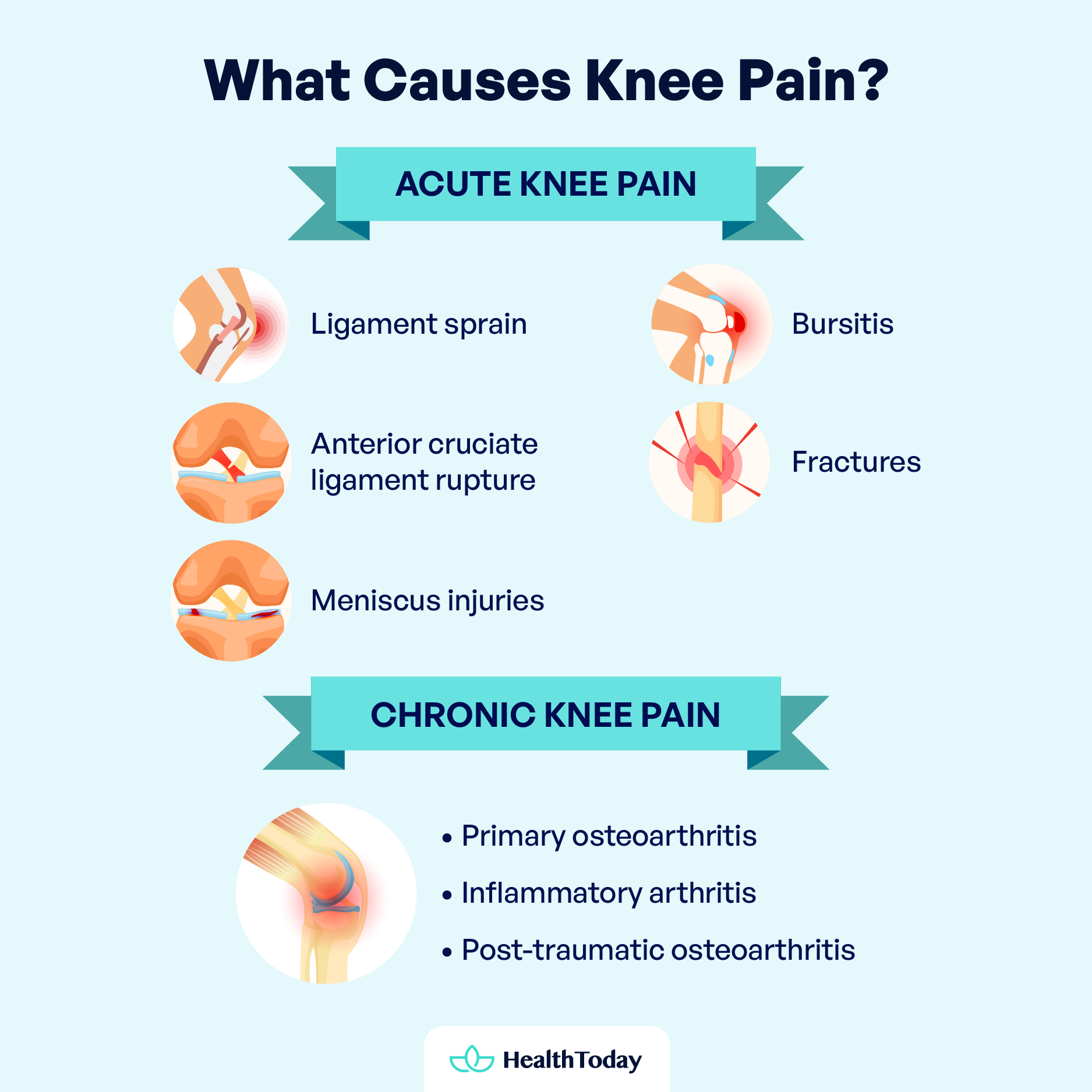
Knee pain is usually caused by inflammation and irritation in the joint. The knee joint comprises bones, tendons, ligaments, menisci, and synovial sacs called bursae. This complex structure creates difficulties in the etiologic diagnosis of knee pain. To differentiate the structures, physicians usually perform maneuvers in the physical examination and request complementary studies such as ultrasound or MRI, depending on the severity.
The causes of knee pain are usually divided into acute and chronic.
Acute knee pain
Acute knee pain is commonly the result of an injury, such as a meniscus injury, ligament strain or sprain, joint bursa inflammation, or a broken bone.
Ligament sprain
Ligaments are bands of connective tissue that connect bones and provide stability between them. A sprain occurs when an abrupt twist is generated with the foot fixed on the ground or a direct trauma to the knee. After the injury, the ligament is stretched or torn. Symptoms include pain, swelling, a feeling of instability, or impaired knee movement. There are four main ligaments in the knee.
- Cruciate ligaments (Posterior and Anterior) usually get injured during sports, car accidents, or falls.
- Collateral ligaments (Medial and Lateral) are commonly injured by a blow to the outside of the knee in contact sports.
Anterior cruciate ligament rupture
Anterior cruciate ligament rupture is common in sports involving rotational movements and changes of direction, such as football, soccer, basketball, and skiing. About 50 percent of these injuries involve damage to the meniscus, cartilage, or other ligaments (1).

Meniscus injuries
The menisci are fibrocartilaginous structures inside the knee joint. One is located in the external or lateral region (external meniscus), and another in the internal or medial zone (internal meniscus). They contribute stability to the articulation and absorb impacts between the tibia and the femur.
The injuries occur when the knee suddenly turns with the foot on or when the knee is forced into flexion. Additionally, some people with knee wear and tear are more likely to have a meniscal injury. Symptoms include pain, swelling, difficulty moving the knee, and a locking sensation.
Bursitis
The bursa are small bags filled with joint fluid responsible for the lubrication of the knee joint. When inflamed bursitis is generated, it generates symptoms such as pain when flexing or extending the joint, lameness or limping, stiffness of the area, and limitation of movement.
Fractures
Fractures are less frequent due to direct high-impact injuries, such as car accidents or falls.
Chronic knee pain
Chronic knee pain usually occurs in older people. It is a pain of less intensity than acute pain but is maintained over time, with exacerbations and attenuations. It is generally associated with osteoarthritis (wear and tear of the cartilage), which causes bone changes, chronic tendinitis, and problems in the patella.
There are three types of osteoarthritis that generate joint pain:
- Primary osteoarthritis: It is the wear and tear product of age.
- Inflammatory arthritis: Inflammatory diseases, such as rheumatoid arthritis, usually generate inflammation and joint involvement, limiting the quality of life.
- Post-traumatic osteoarthritis: After a fracture, the complex anatomical structures of the joint begin to interact differently, producing erosion of the cartilage and generating early osteoarthritis.
Knee osteoarthritis increases the friction between the bones, being the most common cause for needing a knee replacement. This condition is progressive and makes daily life difficult, especially when kneeling, walking, and going up or down stairs.
Differentiating the causes into acute and chronic ones allows for better insight into the potentially required medical interventions. It is also necessary to consider the age, previous injuries, present illnesses, and the type of sport performed to treat them optimally and efficiently.
How to make a knee stop hurting? 6 effective home remedies
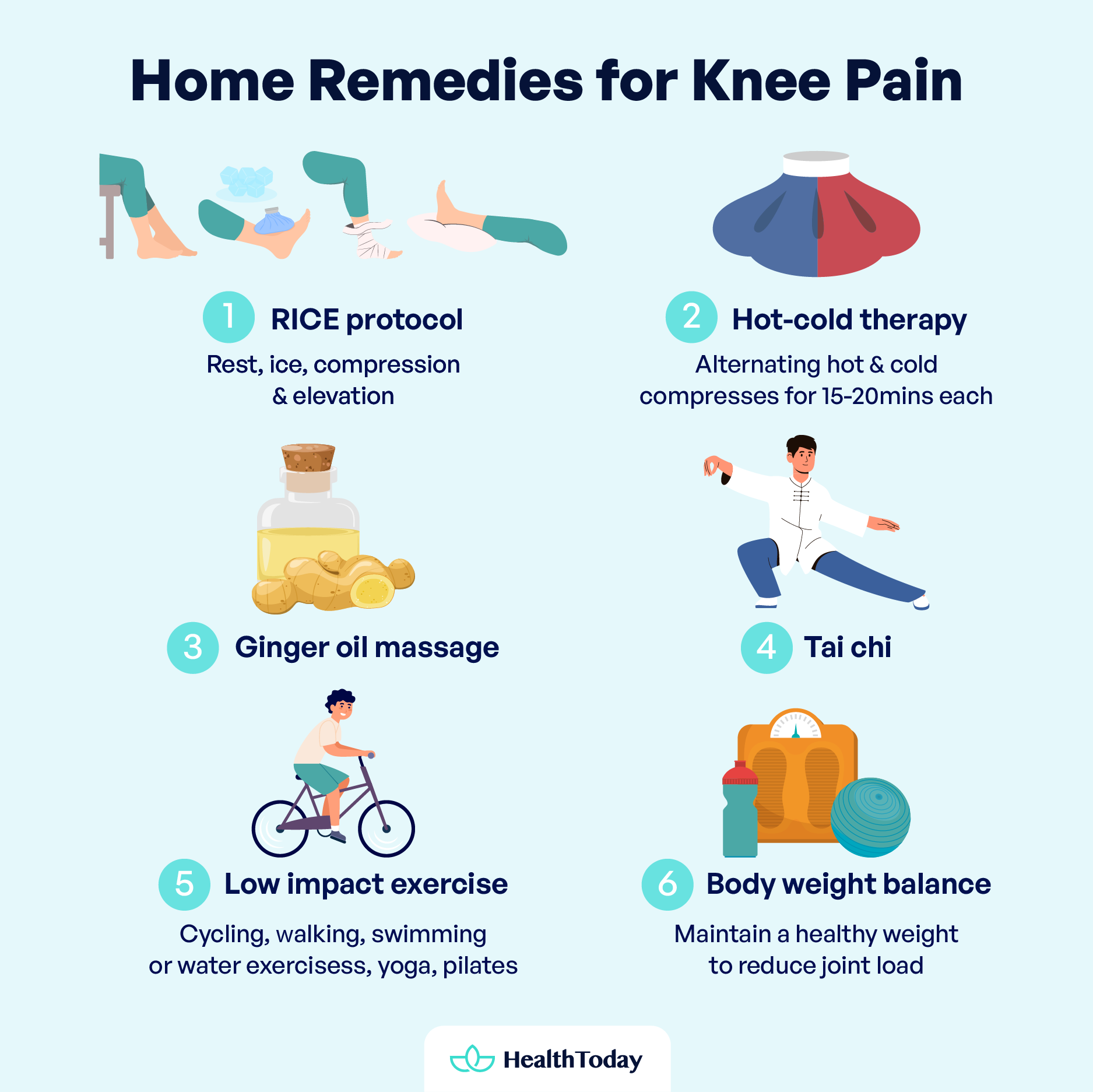

Dealing with knee pain can be a frustrating experience, limiting your mobility and affecting your daily activities. While it’s essential to consult with a healthcare professional for a proper diagnosis, several home remedies may help alleviate knee pain:
RICE protocol
The RICE method stands for rest, ice, compression, and elevation (2). Rest allows the knee to heal, ice reduces inflammation, compression helps control swelling, and elevation minimizes fluid retention. Apply this method the first two days after a strain or sprain. Adding non-steroidal anti-inflammatory drugs such as diclofenac or ibuprofen is recommended to relieve pain.
Hot-cold therapy
To recover from an injury, alternating hot and cold compresses for 15-20 minutes each is a proven method to relieve knee pain and speed recovery. The hot compress relaxes the muscles, increases blood flow, and promotes the delivery of nutrients to the injured area. This process reduces pain and stiffness and eliminates waste products. In addition, the heat increases the flexibility of the muscles and ligaments, which helps improve knee mobility (3).
On the other hand, cold helps reduce the inflammation that occurs instantly after an injury.
Here are some tips to help you with your rehabilitation:
- Use cold pads for the first two days. In the initial 48 hours after an injury, prioritize cold therapy. Apply cold pads for 20 minutes, four to eight times a day, to reduce swelling and provide immediate relief.
- Avoid direct ice contact with the skin. To prevent frostbite or ice burn, never apply ice directly to the skin. Wrap the ice pack in a thin cloth or towel before applying it to the affected area.
- Apply heat for up to 20 minutes. When using heat therapy, apply it for up to 20 minutes. This duration allows the therapeutic warmth to penetrate tissues without risking overheating.
- Check heat pad temperature. Ensure a heat pad isn’t too hot before applying it to your skin. Test the temperature to prevent burns or discomfort during heat therapy sessions.
- Skip heat therapy during acute knee pain. If your joint is hot and inflamed during a flare-up, avoid heat therapy, as it can exacerbate the inflammation. Instead, opt for cold therapy to soothe the joint.






Ginger oil massage
Multiple clinical studies suggest that patients with chronic knee pain due to osteoarthritis can improve their quality of life by massaging with ginger oil. Studies show that they decrease joint pain compared to patients who do not massage their joints (4). These products are available in pharmacies and are over-the-counter. Besides being a natural product, ginger reduces inflammation, contains antioxidants, and, in some patients, improves chronic pain.
Tai Chi
Tai Chi, an ancient form of Chinese exercise that combines gentle, flowing movements with breathing and meditation techniques, is beneficial for patients with osteoarthritis. As it is a low-impact physical activity, it is recommended for:
- Improved flexibility and mobility: Tai Chi involves gentle, controlled movements that help improve joint flexibility. This can be especially beneficial for people with osteoarthritis, as it promotes mobility of affected joints.
- Muscle strengthening: Although Tai Chi has a low impact, the controlled movements activate various muscle groups. This can contribute to muscle strengthening, providing additional support to joints affected by osteoarthritis.
- Pain reduction: Several studies have shown that regular practice of Tai Chi can help reduce the pain associated with osteoarthritis (5). Gentle movements and concentration on breathing can positively affect pain perception.
- Improved balance: Tai Chi focuses on body awareness and posture, which can help enhance balance. This is especially valuable for people with osteoarthritis who may experience balance problems due to joint involvement.
It is important to note that before beginning any exercise program, especially for people with medical conditions such as osteoarthritis, a healthcare professional should be consulted. A Tai Chi instructor experienced working with people with osteoarthritis can also adapt the movements according to individual needs and physical limitations.
Low impact exercise
In patients with osteoarthritis, it is recommended to perform an individually adapted exercise plan to tone muscles and preserve mobility and balance. It is vital to conduct activities in a supervised, regular manner to acquire more muscles that allow a quality of life (6).
Low-impact activities are a good option, such as:
- Cycling
- Walking
- Swimming or water exercises
- Yoga
- Pilates
If the pain worsens with physical activity, it is advisable to stop. Consult your physician or a physical therapist to design a program that is right for you and adapts as your symptoms change.






Body weight balance
Being overweight is linked to knee pain due to the additional load on the joints, increasing the risk of wear and tear and conditions such as osteoarthritis (7).
In addition, inflammation, stress on the structure, and changes in gait contribute to discomfort. Weight loss through a healthy diet and regular exercise is key to addressing this problem, with guidance from healthcare professionals. Additional measures, such as physical therapy and assistive devices, can help relieve pain and improve knee health.
The methods to relieve knee pain should be personalized to find the best option that suits your needs. It is essential to consult with your doctor if pain persists or if other symptoms, such as swelling, arise.
Knee pain not going away: When to see your doctor?
Persistent knee pain subjected to rest and over-the-counter analgesics that do not improve within 48 hours may warrant a visit to the doctor. It is essential to seek medical attention in the following circumstances:
- Prolonged discomfort: If knee pain persists for an extended period despite home remedies or over-the-counter pain relievers.
- Intensifying pain: if the pain becomes more severe over time or interferes with daily activities.
- Swelling and redness: If you notice significant swelling, redness, or warmth around the knee joint, it may indicate inflammation or infection.
- Limited range of motion: If you experience difficulty moving your knee or notice decreased flexibility and range of motion.
- Instability or weakness: Feelings of instability or weakness in the knee, especially during weight-bearing activities, should be treated promptly, as they may indicate meniscus or ligament injuries.
- Fever or systemic symptoms: The presence of fever or other systemic symptoms, along with knee pain, may indicate an underlying infection or inflammatory condition.
- Previous knee conditions: If you have a history of knee problems or surgery and experience persistent pain, it is essential to consult your doctor.
Remember that early intervention and diagnosis can help prevent the progression of possible underlying problems. Your doctor can perform a thorough examination, order diagnostic tests if necessary, and recommend a treatment plan appropriate to your specific condition.






What knee conditions can home remedies help?
Home remedies can help treat mild to moderate symptoms associated with various knee conditions. Although these remedies do not cure the underlying conditions, they can relieve knee pain. Some knee conditions where home remedies may be beneficial are:
- Osteoarthritis: Home remedies such as warm compresses, gentle exercises, and maintaining a healthy weight can help control pain and improve mobility and muscle tone in people with osteoarthritis.
- Minor injuries (strains and sprains): Rest, ice, compression, and elevation (RICE), along with over-the-counter pain relievers, can effectively reduce pain and swelling associated with minor knee injuries.
- Patellar tendonitis (jumper’s knee): Rest, ice packs, and over-the-counter anti-inflammatory medications can relieve pain and swelling associated with patellar tendonitis. Stretching and strengthening exercises may also help. It is important to follow up with a kinesiologist.
- Iliotibial band syndrome (ITBS): Stretching, foam rolling, and strengthening exercises for the hip and thigh muscles can help control ITBS symptoms. Rest and ice can help reduce inflammation. If pain persists, kinesiotherapy will be helpful.
- Runner’s knee (patellofemoral pain syndrome): Quadriceps strengthening exercises, proper footwear, and avoiding excessive stress can help control the runner’s knee. Ice packs can help relieve pain and inflammation.
- Bursitis: Ice packs, rest, and avoiding activities that exacerbate symptoms can help control bursitis-related knee pain. Over-the-counter anti-inflammatory medications may also be beneficial.
Knee pain can have multiple origins, and interpreting it is difficult without medical knowledge. If the pain persists for more than 48 hours or does not subside with over-the-counter pain relievers, seek medical attention.






What is the #1 mistake that makes bad knees worse?
The number 1 mistake that can worsen the condition of the knees is neglecting proper weight control. Excess weight puts additional stress on the knee joints, which contributes to conditions such as early osteoarthritis.
Why do I have bad knees at 14?
At a young age, like 14, bad knees may be attributed to various factors, including genetics, injury, or underlying medical conditions. Overuse during sports, improper biomechanics, or issues with joint development can contribute.
Should I keep my knee straight or bent?
The position of the knee depends on the specific injury or condition. In general, it’s advisable to avoid prolonged periods of keeping the knee completely straight or bent. Gentle movements within a pain-free range, along with proper rest, can help prevent stiffness.
What exercises should you avoid with knee pain?
Exercises that place excessive stress on the knees should be avoided, including high-impact activities like running or jumping. Deep squats, lunges, and exercises that involve sudden pivoting can exacerbate knee pain. Low-impact exercises like swimming, cycling, and walking are often better tolerated.
Is it OK to walk with knee pain?
In many cases, walking can be beneficial for knee pain, especially when done correctly. It promotes joint mobility and helps maintain muscle strength. However, individuals with severe or acute knee pain should consult a healthcare professional before walking or exercising. Proper footwear and walking on level surfaces are essential considerations to reduce the impact on the knees.
Summary
Knee pain is common in people of all ages, whether from sports activities in young people or due to aging in older adults. The anatomical complexity of the knee joint, with its various structures, can give rise to various causes of pain.
Home remedies like the RICE protocol, heat-cold therapy, ginger oil massage, and low-impact exercises such as swimming, walking, and Tai Chi may alleviate the pain.
Maintaining a healthy weight, wearing appropriate footwear, and leading a healthy lifestyle are essential preventive measures for comprehensive knee care. In case of persistent or worsening pain, seeking timely medical evaluation for accurate diagnosis and appropriate treatment is crucial.







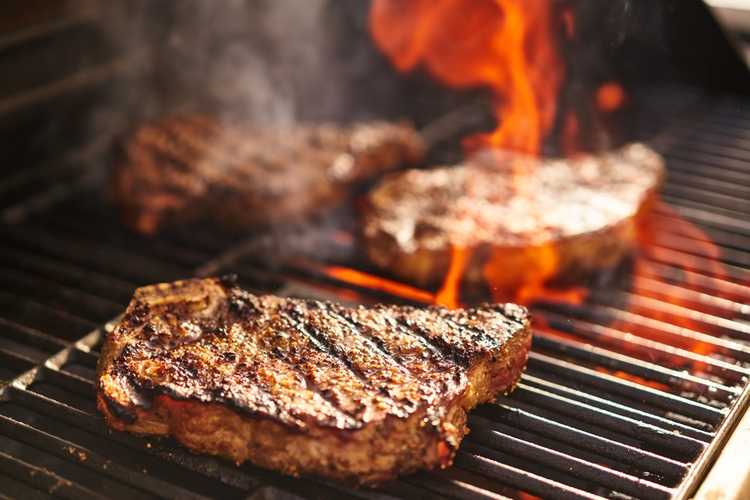
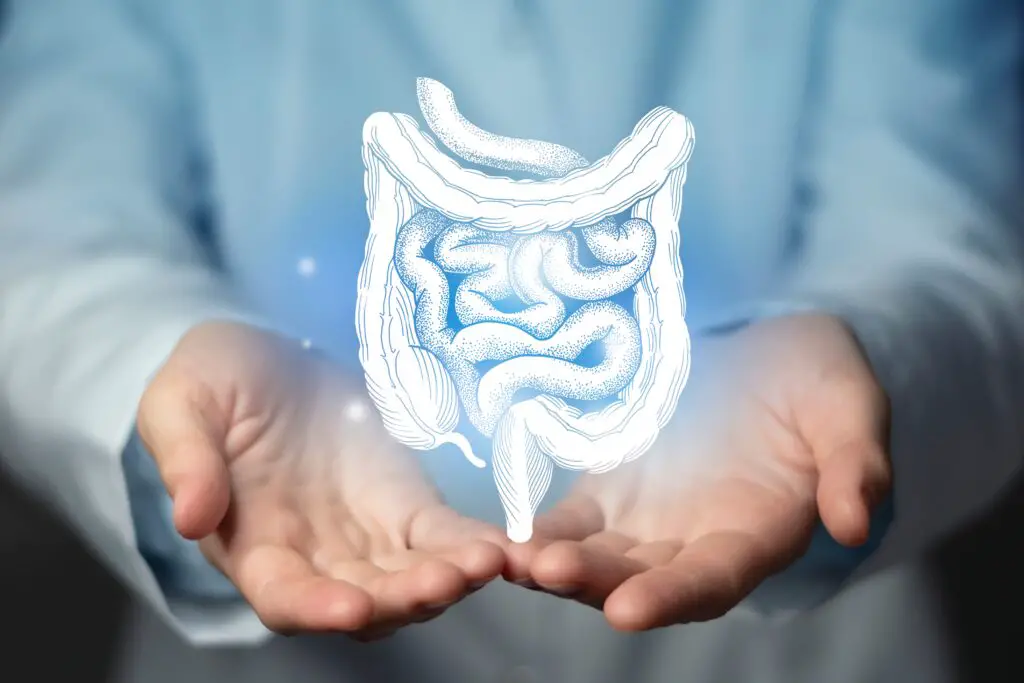

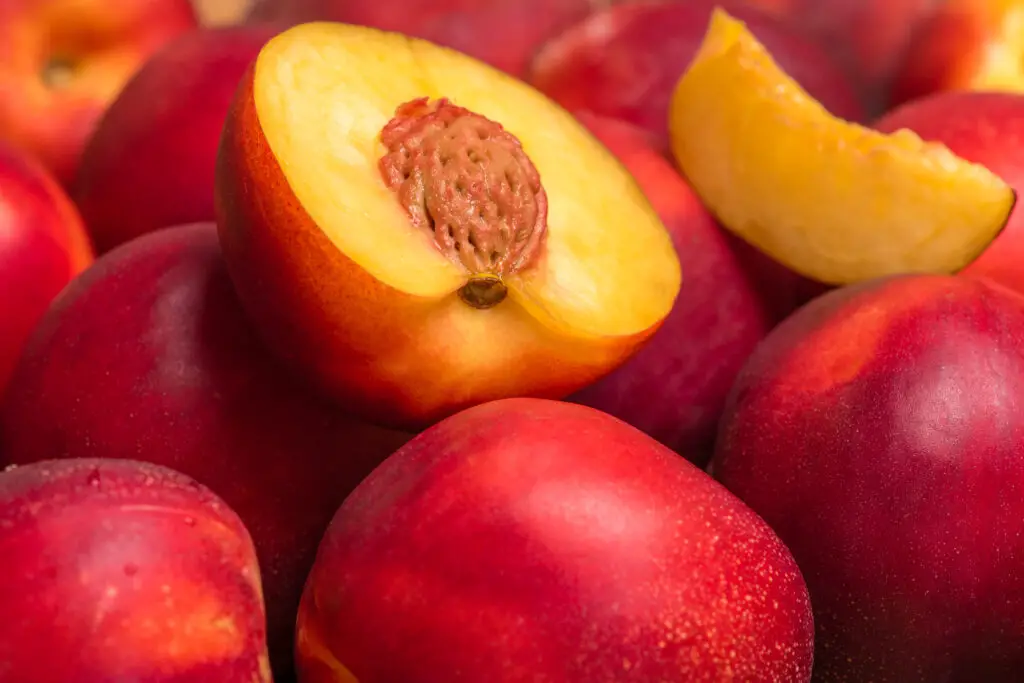
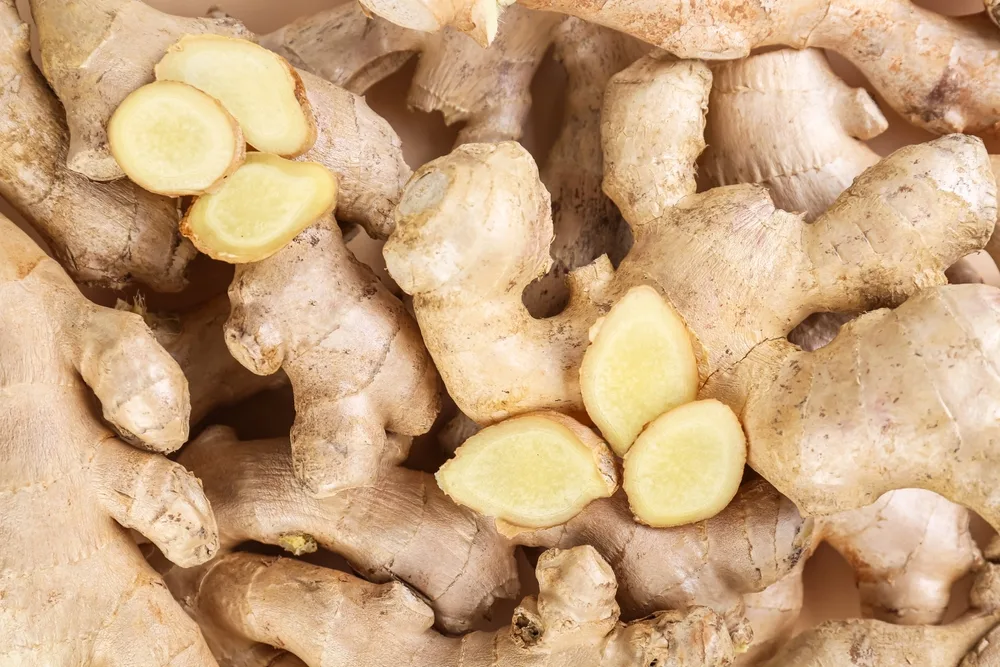
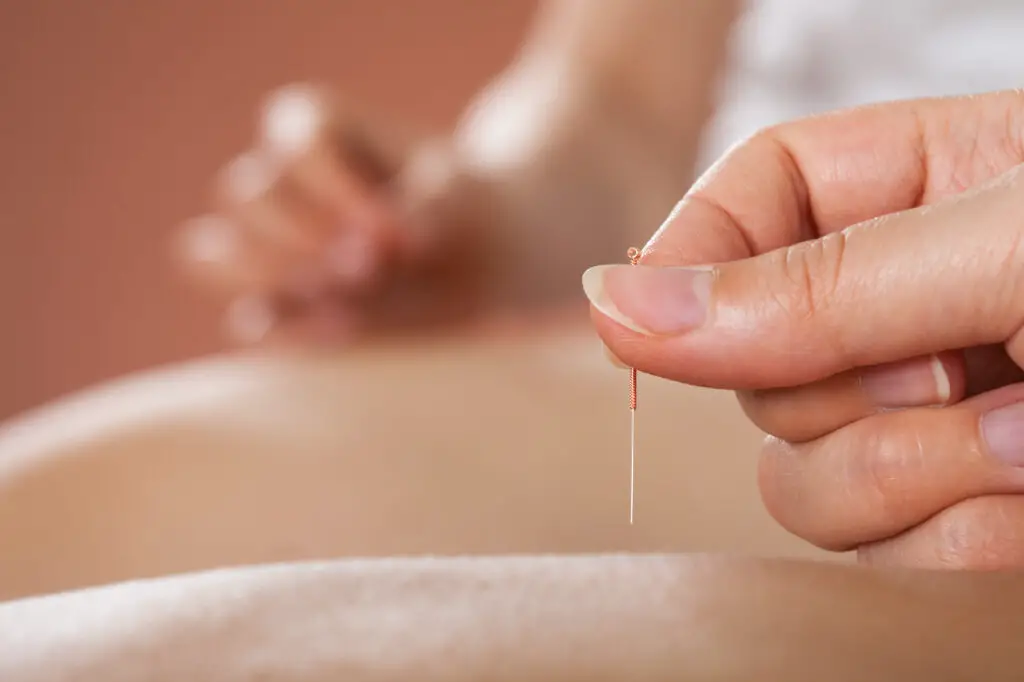
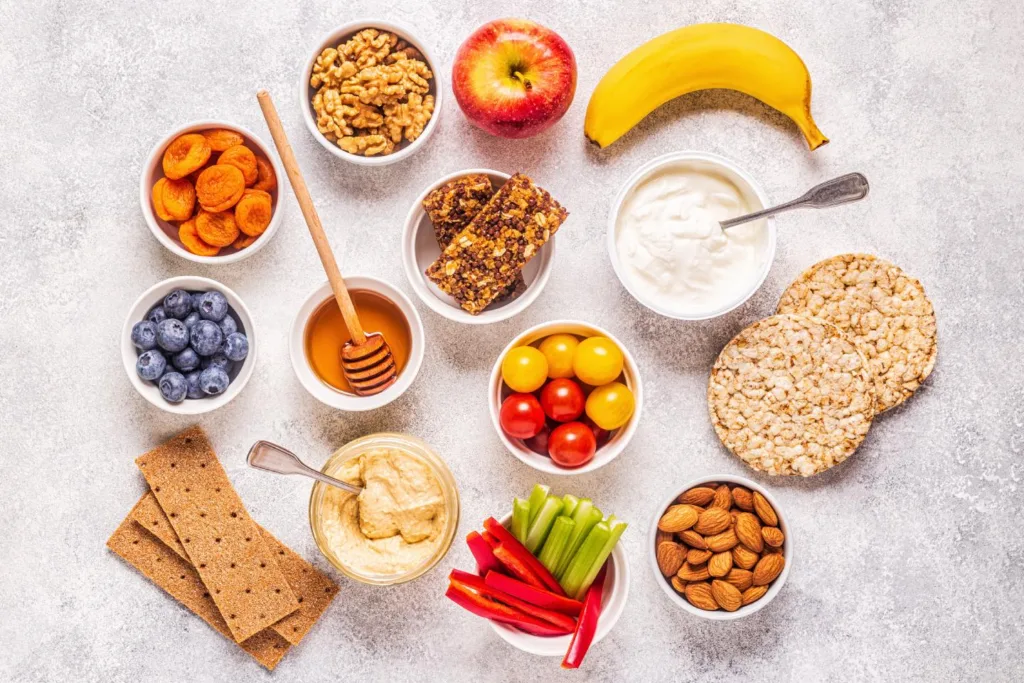


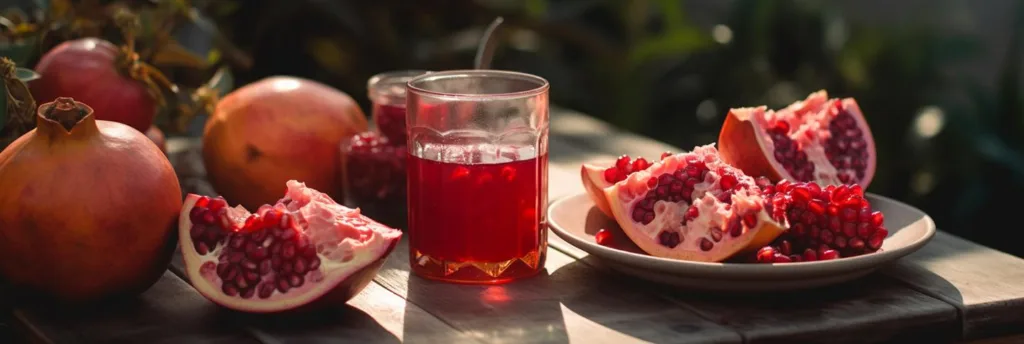
Comments
0